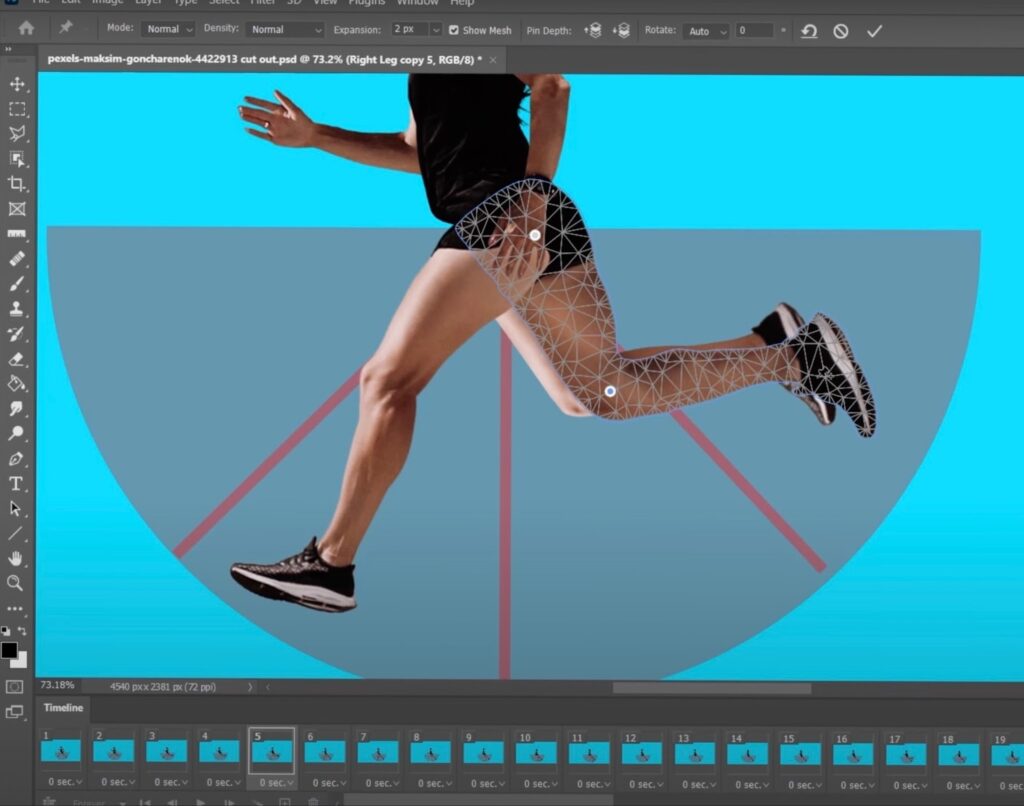Puppet Warp, an innovative feature in software like Adobe Photoshop, revolutionizes how digital artists manipulate and transform images. This tool enables users to warp specific parts of an image by creating a mesh over the area and then manipulating anchor points, often referred to as ‘pins’. This functionality is particularly beneficial for adjusting the position or reorienting elements within a digital image.
Understanding the Basics of Puppet Warp
Before delving into advanced techniques, it’s paramount to grasp the basics. Puppet Warp can be found under the ‘Edit’ menu in Photoshop. Once activated, a mesh appears over the selected layer, ready for manipulation. The real magic begins when you start adding pins to this mesh. Each pin acts as a pivot point, allowing for intricate adjustments.
Creating Your First Warp
- Select the layer you wish to modify;
- Choose ‘Edit’ > ‘Puppet Warp’;
- Click on the image to add pins where you need control;
- Drag the pins to warp the image.

Mesh Options: Explained
The mesh that appears over your image can be adjusted in terms of its density. A denser mesh offers more precision, ideal for detailed work, while a lighter mesh could suffice for broader adjustments.
Advanced Techniques in Puppet Warp
Moving beyond the basics, you can unlock the full potential of Puppet Warp by exploring its advanced features. For instance, altering the depth of pins can create more realistic transformations, as it allows you to decide which parts of the image are in front.
Manipulating Images with Precision
Experiment with pin depth and density to mold your image with incredible accuracy. Remember, subtle movements often yield the most natural results.
Comparing Puppet Warp with Other Tools
Puppet Warp stands out against other image manipulation tools due to its intuitive control system and precision. However, it’s important to know when to use it in conjunction with other tools for the best results.
Puppet Warp vs. Transform Tool
| Feature | Puppet Warp | Transform Tool |
|---|---|---|
| Control | High precision | Broad adjustments |
| Usage | Detailed manipulation | Scale, rotate, skew |
Tips and Tricks for Mastering Puppet Warp
To truly master Puppet Warp, practice is key. Start with simpler projects and gradually move to more complex ones. Also, remember that sometimes less is more – subtle changes can be very effective.
Incorporating Puppet Warp in Personal Branding: Pronouns in Bio Examples
In today’s digital age, personal branding is crucial, and the way you present yourself online can have a significant impact. One aspect of this is the inclusion of pronouns in your bio – a practice that promotes inclusivity and clarity. Let’s explore how Puppet Warp can enhance the visual appeal of such bios, especially when incorporating text or graphic elements.
Enhancing Bio Images with Puppet Warp
Imagine you’re designing a social media bio image that includes your pronouns. Puppet Warp can be instrumental in adjusting the text or graphic elements around your pronouns to make them stand out. This tool allows for subtle yet effective manipulation, ensuring that your message is clear and visually appealing.
Examples of Pronouns in Bio Designs
- Subtle Curves: Using Puppet Warp to curve the text around a profile picture, making the pronouns (e.g., “They/Them”) seamlessly integrate into the overall design;
- Interactive Elements: Adjusting graphic elements like arrows or circles to point towards or encircle the pronouns, emphasizing their importance.
In both examples, Puppet Warp’s precision and flexibility allow for creative and respectful ways to highlight your identity in your personal branding efforts.
Conclusion
Puppet Warp is a game-changer for digital artists, offering unparalleled control and creativity. With practice and experimentation, it can become an essential part of your digital toolkit.